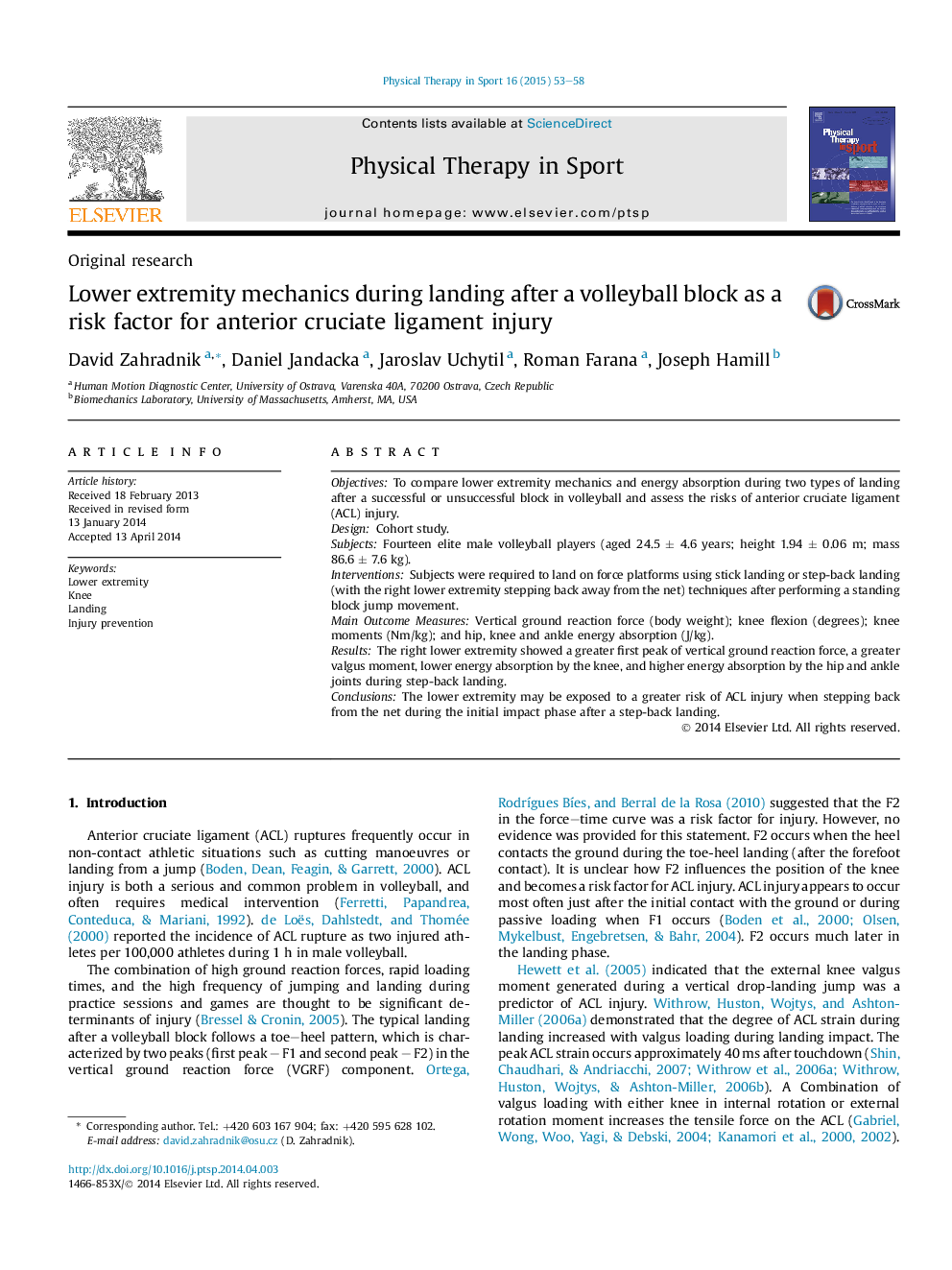| Article ID | Journal | Published Year | Pages | File Type |
|---|---|---|---|---|
| 2705819 | Physical Therapy in Sport | 2015 | 6 Pages |
•The step-back landing increased risk of ACL injury over the stick landing.•The back-stepping limb may be exposed to a greater ACL injury risk.•If possible, the players should use the stick landing.•Under time pressure, the player should use alternately left and right step-back.
ObjectivesTo compare lower extremity mechanics and energy absorption during two types of landing after a successful or unsuccessful block in volleyball and assess the risks of anterior cruciate ligament (ACL) injury.DesignCohort study.SubjectsFourteen elite male volleyball players (aged 24.5 ± 4.6 years; height 1.94 ± 0.06 m; mass 86.6 ± 7.6 kg).InterventionsSubjects were required to land on force platforms using stick landing or step-back landing (with the right lower extremity stepping back away from the net) techniques after performing a standing block jump movement.Main Outcome MeasuresVertical ground reaction force (body weight); knee flexion (degrees); knee moments (Nm/kg); and hip, knee and ankle energy absorption (J/kg).ResultsThe right lower extremity showed a greater first peak of vertical ground reaction force, a greater valgus moment, lower energy absorption by the knee, and higher energy absorption by the hip and ankle joints during step-back landing.ConclusionsThe lower extremity may be exposed to a greater risk of ACL injury when stepping back from the net during the initial impact phase after a step-back landing.
